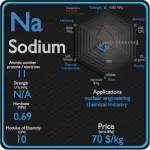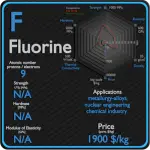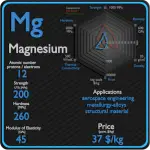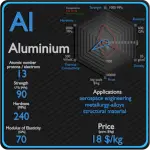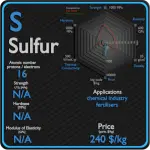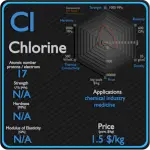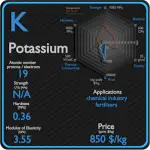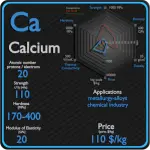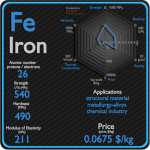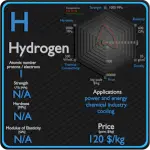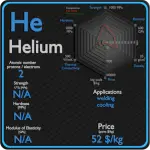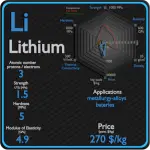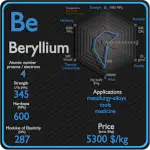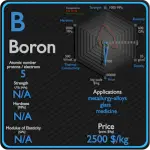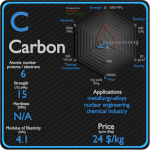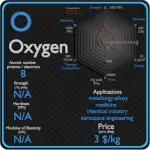This article contains comparison of key thermal and atomic properties of oxygen and sulfur, two comparable chemical elements from the periodic table. It also contains basic descriptions and applications of both elements. Oxygen vs Sulfur.
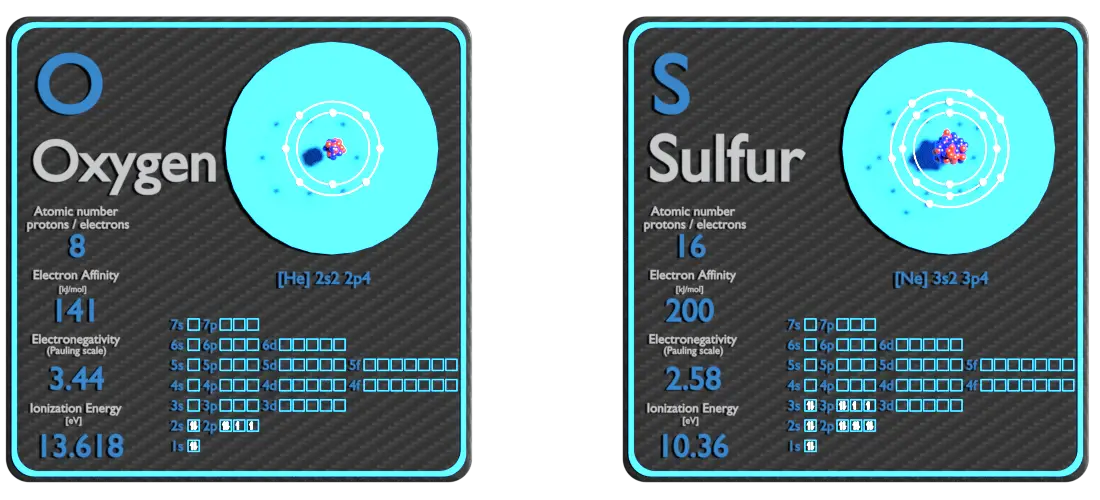
Oxygen and Sulfur – About Elements
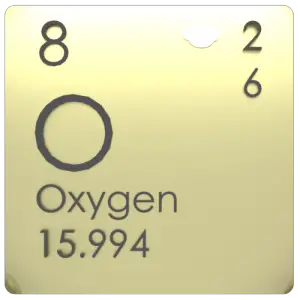
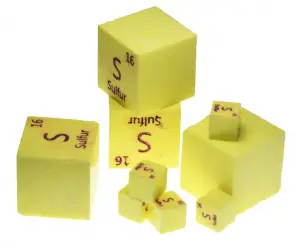
Source: www.luciteria.com
Oxygen and Sulfur – Applications
Oxygen
Common uses of oxygen include production of steel, plastics and textiles, brazing, welding and cutting of steels and other metals, rocket propellant, oxygen therapy, and life support systems in aircraft, submarines, spaceflight and diving. Smelting of iron ore into steel consumes 55% of commercially produced oxygen. In this process, oxygen is injected through a high-pressure lance into molten iron, which removes sulfur impurities and excess carbon as the respective oxides, sulfur dioxide and carbon dioxide. Uptake of oxygen from the air is the essential purpose of respiration, so oxygen supplementation is used in medicine. Treatment not only increases oxygen levels in the patient’s blood, but has the secondary effect of decreasing resistance to blood flow in many types of diseased lungs, easing work load on the heart.
Sulfur
The greatest commercial use of the element is the production of sulfuric acid for sulfate and phosphate fertilizers, and other chemical processes. Sulfur is increasingly used as a component of fertilizers. The most important form of sulfur for fertilizer is the mineral calcium sulfate. The element sulfur is used in matches, insecticides, and fungicides. Many sulfur compounds are odoriferous, and the smells of odorized natural gas, skunk scent, grapefruit, and garlic are due to organosulfur compounds.
Oxygen and Sulfur – Comparison in Table
| Element | Oxygen | Sulfur |
| Density | 0.00125 g/cm3 | 1.96 g/cm3 |
| Ultimate Tensile Strength | N/A | N/A |
| Yield Strength | N/A | N/A |
| Young’s Modulus of Elasticity | N/A | N/A |
| Mohs Scale | N/A | 2 |
| Brinell Hardness | N/A | N/A |
| Vickers Hardness | N/A | N/A |
| Melting Point | -209.9 °C | 112.8 °C |
| Boiling Point | -195.8 °C | 444.7 °C |
| Thermal Conductivity | 0.02598 W/mK | 0.269 W/mK |
| Thermal Expansion Coefficient | N/A | N/A |
| Specific Heat | 1.04 J/g K | 0.71 J/g K |
| Heat of Fusion | (N2) 0.7204 kJ/mol | 1.7175 kJ/mol |
| Heat of Vaporization | (N2) 5.56 kJ/mol | 45 kJ/mol |
